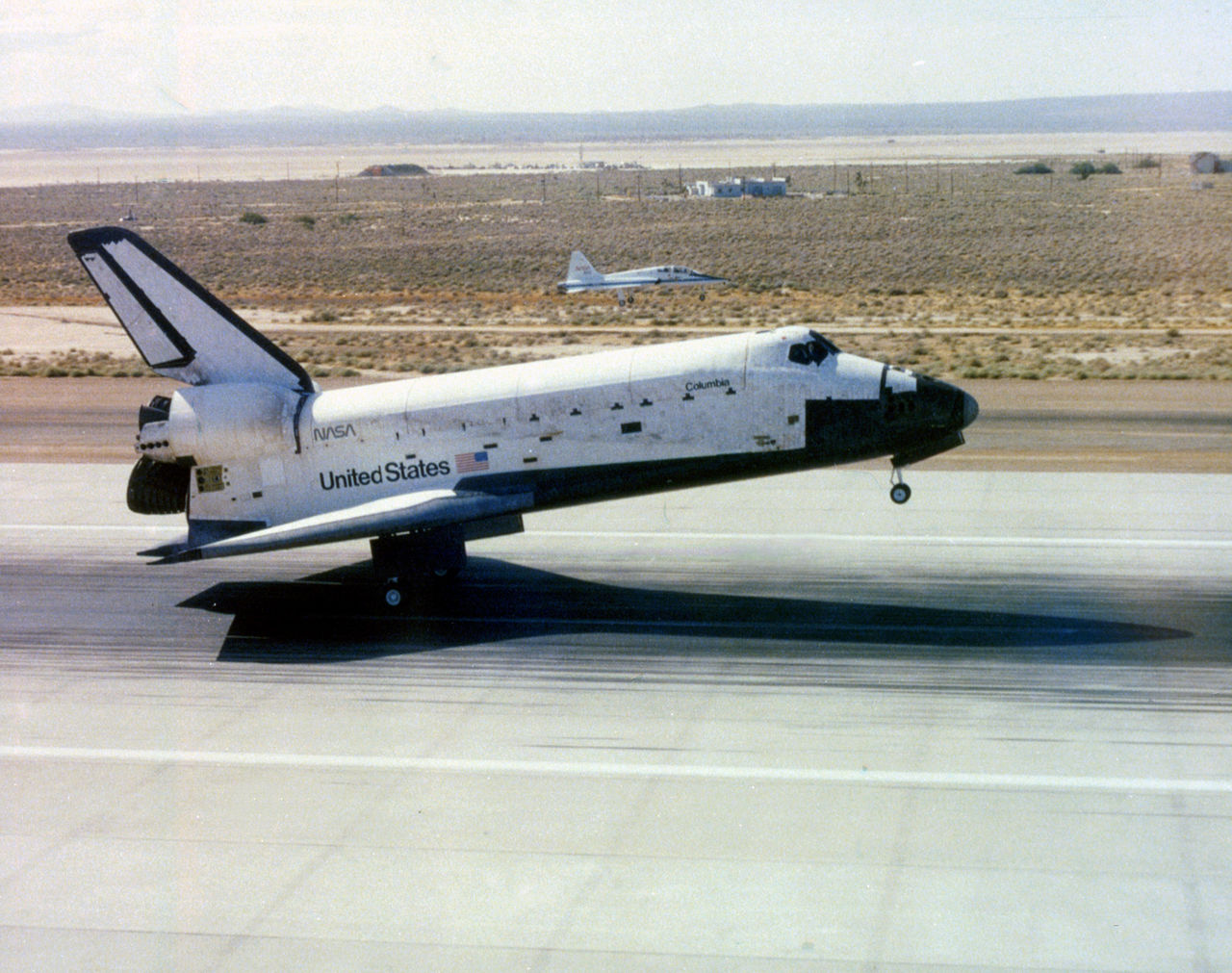
On the morning of 4 July 1982, a rapidly moving black and white speck appeared on the horizon at Edwards Air Force Base, Calif., bringing a pair of space explorers back to Earth after a week in orbit. Minutes later, at 12:09 p.m. EDT (9:09 a.m. PDT), Shuttle Columbia and astronauts Ken Mattingly and Hank Hartsfield alighted on the 15,000-foot-long (4,600-meter) Runway 22, becoming the first U.S. space mission to be in progress on Independence Day. It was true that several key voyages of U.S. space exploration had taken place in July—not least humanity’s first piloted landing on the Moon and the joint Apollo-Soyuz Test Project (ASTP)—but until STS-4 and the flight of Mattingly and Hartsfield, no American had ever been in space on this quintessentially U.S. holiday.
Many other Americans would follow in Mattingly and Hartsfield’s footsteps, aboard five successive shuttle missions between 1992 and 2006, and Americans have also observed the holiday aboard Russia’s Mir space station in 1995-1997 and aboard the International Space Station (ISS) since 2001. Only one U.S. piloted mission has ever launched from Earth on Independence Day and only one has ever landed on Independence Day, but for more than a decade the holiday has been marked by a succession of Americans—and Russians and Germans, Japanese and Belgians, Canadians and Italians, too—from a location far loftier than any the members of the Second Continental Congress could possibly have foreseen when they drafted the language of separation of the Thirteen Colonies from Great Britain, way back in 1776.
Today, in fact, one U.S. astronaut and a pair of Russian cosmonauts are marking the occasion from their perch aboard the ISS. Expedition 44’s Gennadi Padalka, Mikhail Kornienko, and Scott Kelly have been aboard the station since late March and are presently awaiting the arrival of three new crewmates, later this month. “I’d like to wish everybody a Happy Independence Day,” Kelly said in recent video message. “It’s a great holiday, a great tradition.” He expressed hopes to be able to look down from the space station to witness the “tiny specks of light” of celebratory fireworks across the United States, but cautioned that “we’ll have to see how the orbital mechanics works out.”
The first Independence Day spent in orbit by U.S. astronauts began in a rather comical fashion. On 4 July 1982, Mattingly and Hartsfield were in the process of packing away much of their research hardware, after seven days in orbit aboard Columbia. It had been a highly successful mission and the last of four Orbital Flight Tests (OFTs), before the shuttle was declared fully operational and tasked with its first commercial payloads on STS-5. Among the research performed by Mattingly and Hartsfield were the first classified payload, flown on behalf of the Department of Defense. “On one experiment, they had a classified checklist [and] because we didn’t have a secure comm link, we had the checklist divided up in sections that just had letter-names, like Bravo-Charlie, Tab-Charlie, Tab-Bravo, that they would call out,” recalled Hartsfield, years later. Whenever the astronauts spoke to U.S. Air Force controllers at the Satellite Control Facility in Sunnyvale, Calif., they would be told, for example, to “Do Tab-Charlie.”
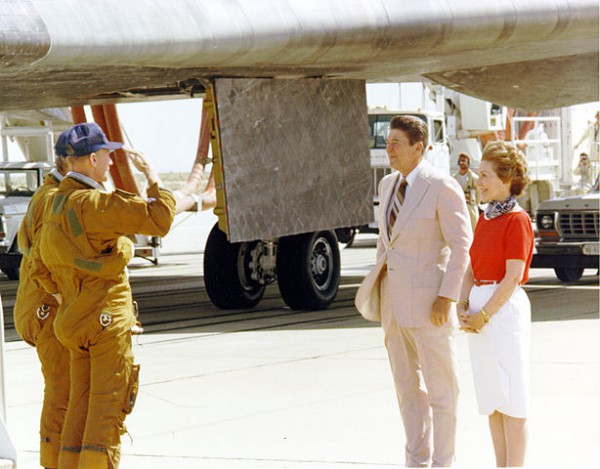
“We had a locker that we kept all the classified material,” continued Hartsfield, “and it was padlocked, so once we got on orbit, we unlocked it and did what we had to do.” As the end of the mission neared, Hartsfield packed away the remainder of the classified materials and secured the locker. He told Mattingly. “I got all the classified stuff put away. It’s all locked up.”
“Great!” replied Mattingly.
Half an hour later, the Mission Control Center (MCC) in Houston, Texas, called and told them that the military staff at Sunnyvale wanted to talk to them. The Air Force controller asked them, cryptically, to “do Tab-November.” The two astronauts looked at each other, bewildered. What the hell was Tab-November? Neither of them could remember. The secretive nature of the military instruction and the lack of a secure communications link also meant they could not ask over the radio. The only option was to reopen the classified locker, dig through all the materials, and find the checklist. Eventually, after much searching, Hartsfield finally found the glossary entry for Tab-November.
It read: Put everything away and secure it!
Shortly afterwards, the STS-4 crew commenced their hypersonic descent back through the “sensible” atmosphere, bound for a touchdown at Edwards. Their arrival in the California desert was being watched closely by President Ronald Reagan and First Lady Nancy Reagan, and Mattingly and Hartsfield had already been briefed by NASA Administrator Jim Beggs and asked to think of some memorable words to mark the occasion. “We knew they had hyped-up the STS-4 mission, so that they wanted to make sure we landed on the Fourth of July,” Mattingly recalled in his NASA oral history. “It was in no uncertain terms that we were going to land on the Fourth of July, no matter what day we took off. Even if it was the Fifth, we were going to land on the Fourth! That meant, if you didn’t do any of your test mission, that’s okay, as long as you land on the Fourth … because the President is going to be there. We thought that was kinda interesting!”
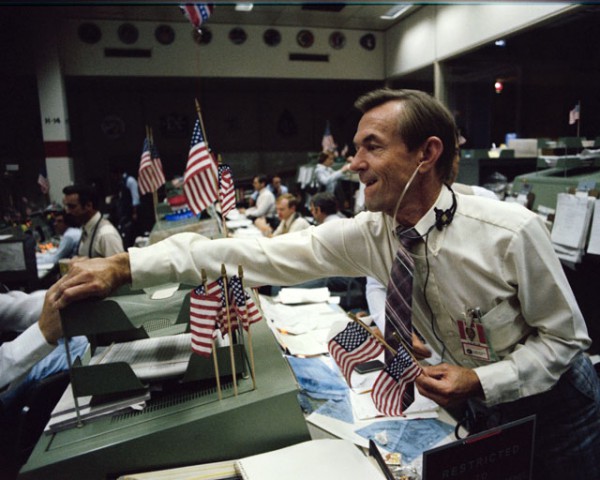
Fortunately, Columbia’s landing—the first on Edwards’ concrete Runway 22—occurred precisely on time on Independence Day, wrapping up a textbook flight. The shuttle’s landing gear was deployed at an altitude of about 400 feet (120 meters), a full 20 seconds before touchdown, allowing all six wheels to be firmly locked into position, with plenty of time to spare. The vehicle alighted on the runway and Mattingly applied the brakes for 20 seconds to come to a smooth halt. Now came his biggest challenge: How to welcome the Reagans inside the shuttle. He and Hartsfield considered putting up a notice, worded to the effect of Welcome to Columbia: Thirty minutes ago, this was in space. As circumstances transpired, Mattingly actually greeted his commander-in-chief with a very painful head. …
Immediately after wheelstop, he turned to Hartsfield and spoke. “I am not going to have somebody come up here and pull me outta this chair! I’m going to give every ounce of strength I’ve got and get up on my own!” Previous crews had come back to Earth, some feeling fine, others feeling nauseous, and still others required a gurney to carry them off the spacecraft for medical attention. That would not happen with the president in attendance. Mentally and physically set up to meet the chief, Mattingly pushed himself upward out of his seat … and smashed his head sharply on the overhead instrument panel! “Oh, did I have a headache,” he recalled later.
“That’s very graceful,” Hartsfield quipped.
Nevertheless, the two returning space heroes composed themselves and Mattingly wiped away the few spots of blood. In the few minutes before Columbia’s hatch was opened, they walked around the middeck, to get themselves acclimated, before descending the steps to meet Reagan. Hartsfield—well known for his merciless sense of humor—was on top form that day. “Well, let’s see. If you do it like you did gettin’ out of your chair, you’ll go down the stairs and you’re going to fall down, so you need to have something to say,” he told Mattingly. “Why don’t you just look up at the president and say ‘Mr. President, those are beautiful shoes? Think you can get that right?”
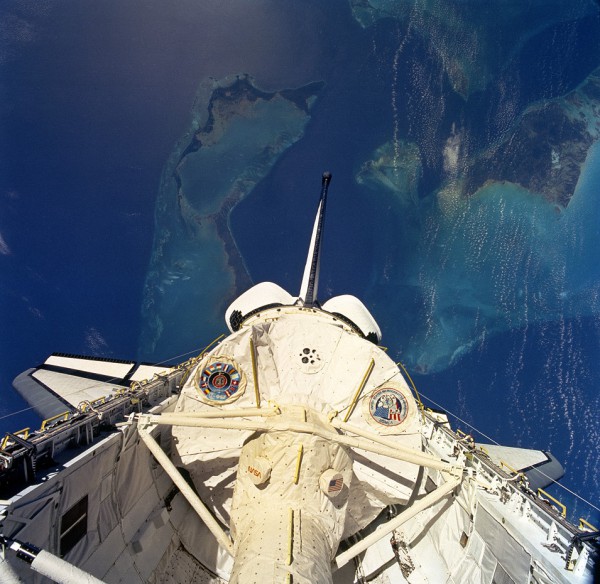
Meanwhile, atop a modified Boeing 747 Shuttle Carrier Aircraft (SCA), Challenger—the second spaceworthy orbiter—was ready to take off from Edwards on a cross-country journey to the Kennedy Space Center (KSC) in Florida, in anticipation of her maiden launch in the spring of 1983. Reagan paid tribute to both vehicles in his speech; Columbia as having cleared the shuttle for operational service and Challenger for being a vision of the future. “Way out there at the end of the runway,” he told his Edwards audience, “the Space Shuttle Challenger … is about to start the first leg of a journey that will eventually put it into space. It’s headed for Florida, now, and they’re about to take off.” And with co-ordinated precision, and careful timing, Reagan gave the ceremonial go-ahead: “Challenger, you are free to take off, now!” Without further ado, the SCA and its cumbersome rooftop passenger roared down the runway and into the clear California skies. Reagan loved it, and even Mattingly’s voice cracked with emotion as he spoke of his pride in the mission and in Hartsfield, whom he labeled “the finest pilot.” With a second shuttle now complete, the future for NASA and the space program seemed bright.
Indeed, that Fourth of July in 1982 represented a time when perhaps anything was possible. The calamity that would befall Challenger was more than three years away and by the time a shuttle crew next spent Independence Day in orbit it would be with a totally new awareness of the reusable spacecraft’s frailties. In 1992, the crew of STS-50 was midway through a record-setting 14-day mission with the first U.S. Microgravity Laboratory (USML-1), when they celebrated the holiday in orbit. STS-50 also trialed the Extended Duration Orbiter (EDO) hardware, which enabled longer shuttle missions and supported 14 flights between June 1992 and the loss of Columbia in February 2003.
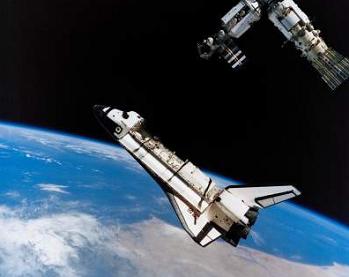
A further three years passed before another shuttle crew—that of STS-71, which undertook the first of nine docking missions with Russia’s Mir space station—spent U.S. Independence Day in orbit on 4 July 1995. That particular morning took on particular resonance, for it was also the day that Atlantis undocked from Mir after five days of joint operations. The crew was awakened, unsurprisingly, to America the Beautiful, and at 7:10 a.m. EDT STS-71 Commander Robert “Hoot” Gibson undocked smoothly from Mir, preceded by Russian cosmonauts Anatoli Solovyov and Nikolai Budarin aboard the Soyuz TM-21 spacecraft, who acquired stunning imagery of the shuttle’s separation. From the windows of Atlantis, Gibson described the Fourth of July extravaganza as a “cosmic ballet.”
Twelve months later, as the movie Independence Day hit theaters around the globe, the crew of STS-78 was approaching the conclusion of their record-setting 17-day Life and Microgravity Spacelab (LMS) mission aboard Columbia. Bruce Springsteen’s Born in the USA and Lee Greenwood’s I’m Proud to be an American greeted the crew as their wake-up music, to which STS-78 Commander Tom Henricks responded that the five U.S.-born crew members were proud to be Americans on the 220th anniversary of independence. Later that same day, Henricks showed his terrestrial audience a view of the United States from space, complete with patriotic background music, and paid particular tribute to 19 U.S. service personnel recently killed a few days earlier in the Khoban Towers bombing in Saudi Arabia. A further dozen months passed before another Columbia crew—that of STS-94, reflying the Microgravity Science Laboratory (MSL)-1—celebrated the historic date in orbit. The astronauts were awakened on 4 July 1997 to the tune of Kate Smith’s God Bless America, as well as the news that NASA’s Sojourner rover had successfully touched down on the surface of Mars, becoming the first wheeled vehicle ever to land on the Red Planet.
It would be a further nine years after STS-94 before another shuttle crew celebrated Independence Day in orbit, by which time the program would have changed markedly in the aftermath of the tragic loss of Columbia. Yet STS-121, to be discussed in tomorrow’s AmericaSpace history article, would carve its own niche in history as the only U.S. piloted space mission to actually rocket into orbit on 4 July. By that time, of course, Americans would have long since celebrated many Independence Days aloft, aboard Russia’s Mir space station and today’s International Space Station (ISS) and several key U.S. planetary and science missions would also have marked the date with profound new discoveries about the Solar System and the Universe around us.
The second part of this article will appear tomorrow.
Want to keep up-to-date with all things space? Be sure to “Like” AmericaSpace on Facebook and follow us on Twitter: @AmericaSpace




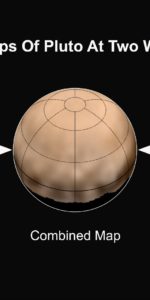
2 Comments
2 Pings & Trackbacks
Pingback:Independence Weekend: Launches, Landings, and Working in Space on the Fourth of July (Part 2) « AmericaSpace
Pingback:‘A Proud Legacy’: Remembering Atlantis on 30th Anniversary of Maiden Flight (Part 1) « AmericaSpace